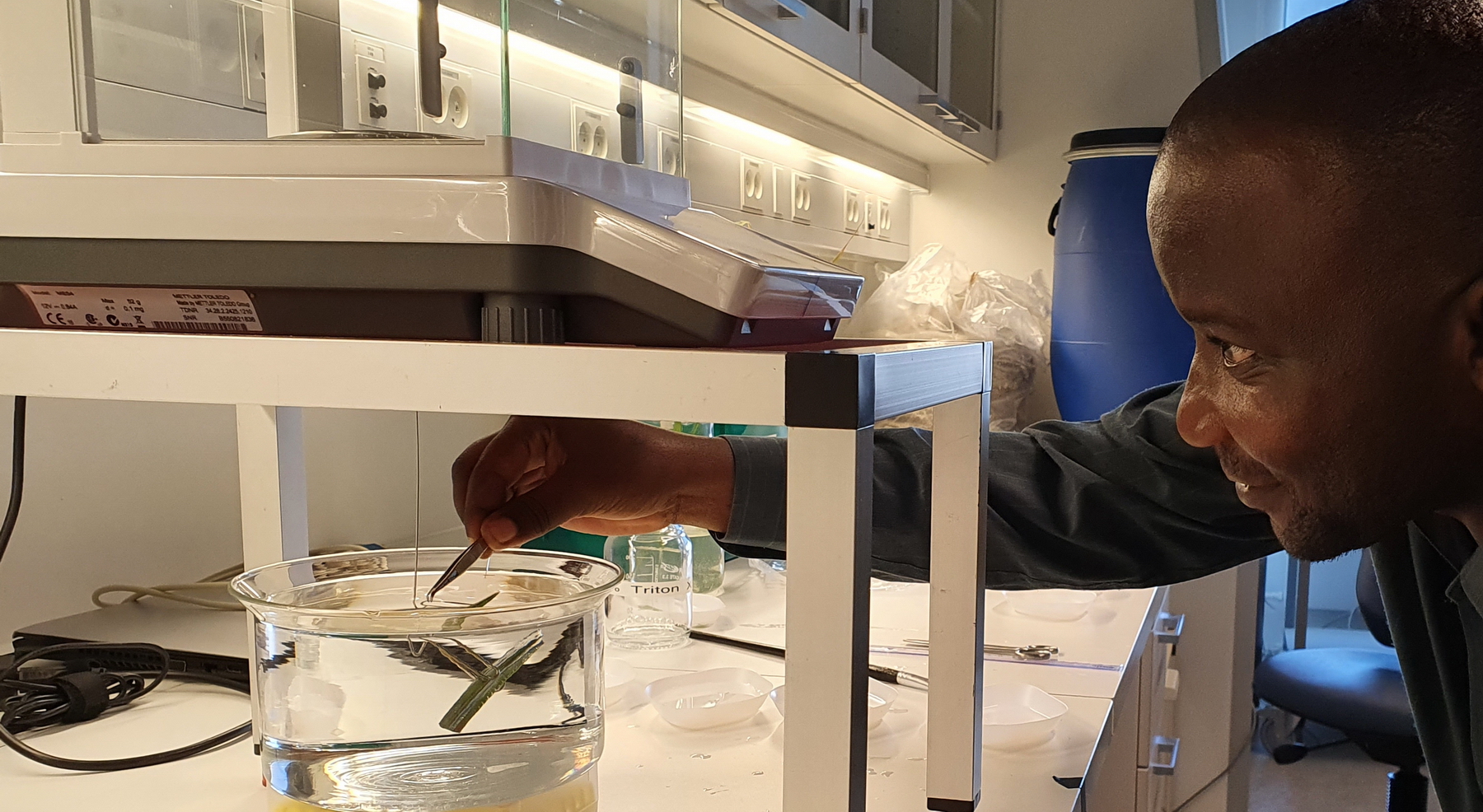The many African genotypes are now flowering up in the glasshouse
BSc student Hans Jensen has studied leaf gas film thickness in a number of African rice genotypes; see this blog post. Based on leaf morphological traits, Hans is able to predict leaf gas film thickness. The prediction includes both initial gas film thickness as well as after some days of submergence. This is a great discovery and will save our colleagues lots of time in the future. In this way, we can germinate rice and screen the young seedlings and thereby skip the time-consuming step of submerging the plants, at least initially. Once candidate genotypes have been identified based on these leaf traits and other promising traits, we can then submerge the candidate genotypes and benchmark these against flood tolerant checks.

Some of these rice genotypes retain a stunning leaf gas film when submerged. We are currently investigation if we can predict the gas film thickness based on leaf morphology. In this way, we can select candidate genotypes for submergence and thereby save a lot of work in the future.

Mpeji Ndabuli is measuring leaf gas film thickness using the buoyancy approach during a training visit to our laboratory in Copenhagen.

Some of these rice genotypes retain a stunning leaf gas film when submerged. We are currently investigation if we can predict the gas film thickness based on leaf morphology. In this way, we can select candidate genotypes for submergence and thereby save a lot of work in the future.

Mpeji Ndabuli is measuring leaf gas film thickness using the buoyancy approach during a training visit to our laboratory in Copenhagen.

